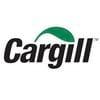Feeding for Broiler Skin Colour – A Nutritional Approach
Published: June 26, 2025
Source : Dr.S.Sridhar M.V.Sc. Animal Nutrition / Product Manager, OPTIMA POULTRY PVT.LTD
Dr.S.Sridhar M.V.Sc.,(Animal Nutrition) / Product Manager, OPTIMA POULTRY PVT.LTD)
In poultry production, skin color is a vital quality parameter in many markets (e.g., Asia, Latin America), where yellow-skinned broilers are preferred. This yellow-orange pigmentation is primarily influenced by xanthophylls, a group of naturally occurring pigments in the carotenoid family.
🌿 What Are Xanthophylls?

Xanthophylls are oxygenated carotenoids (also called hydroxycarotenoids) such as lutein and zeaxanthin. They are lipophilic and get deposited in the skin, fat, and shank of the chicken, imparting a yellow hue. These compounds are easily oxidized, hence the need for continuous dietary inclusion.


🔎 Zeaxanthin (from corn) is more potent than lutein (from alfalfa) in delivering skin color.
Measuring Skin Color – NEPA Standard:
NEPA stands for National Egg and Poultry Association. It developed a method to grade skin color using ether extracts compared with graded potassium dichromate solutions.

🛠 Other Tools:
· 🎨 Roche Color Fan – physical color chart for skin and yolk.
· 🔬 IDL Color-Eye – photometric device to objectively quantify color intensity.
📍 Skin Color Varies by Broiler Body Region

📝 The breast area shows the deepest pigmentation, while the toe is the baseline.
Color Development Timeline:
· Takes ~3 weeks to deposit visible skin pigmentation in broilers.
· Older birds absorb more pigment but also suffer more oxidative loss.
🔬 Why Care About This?
· Consumer preference impacts market price.
· Differentiates product in regional markets.
· Useful for broilers, layers (for yolk), and free-range poultry marketing.
1. North, M. O., & Bell, D. D. (1990). Commercial Chicken Production Manual. 4th Edition. Van Nostrand Reinhold.
2. National Research Council (1994). Nutrient Requirements of Poultry. 9th Rev. Ed. Washington, DC: National Academies Press.
Related topics:
Mentioned in this news release:
Recommend
Comment
Share

Would you like to discuss another topic? Create a new post to engage with experts in the community.













